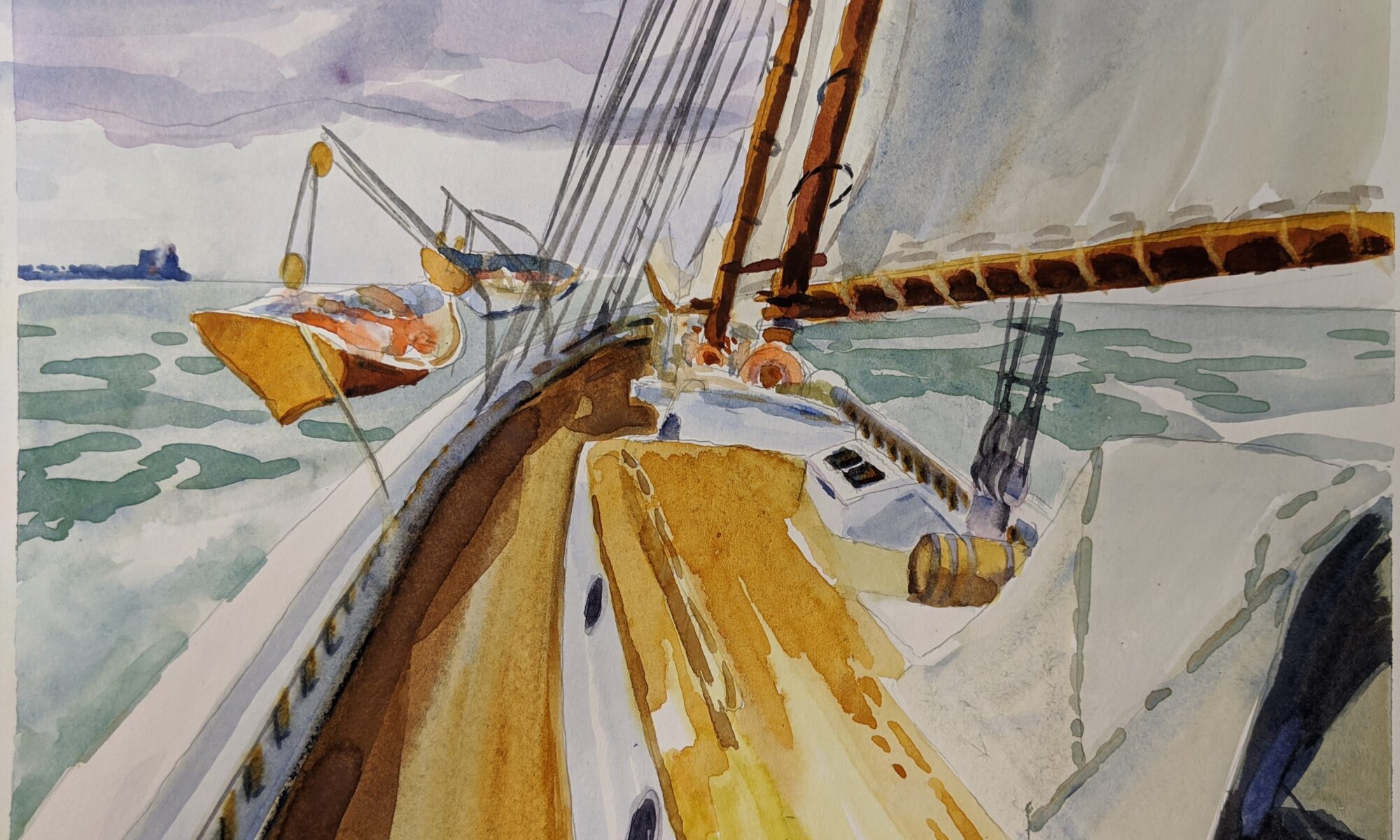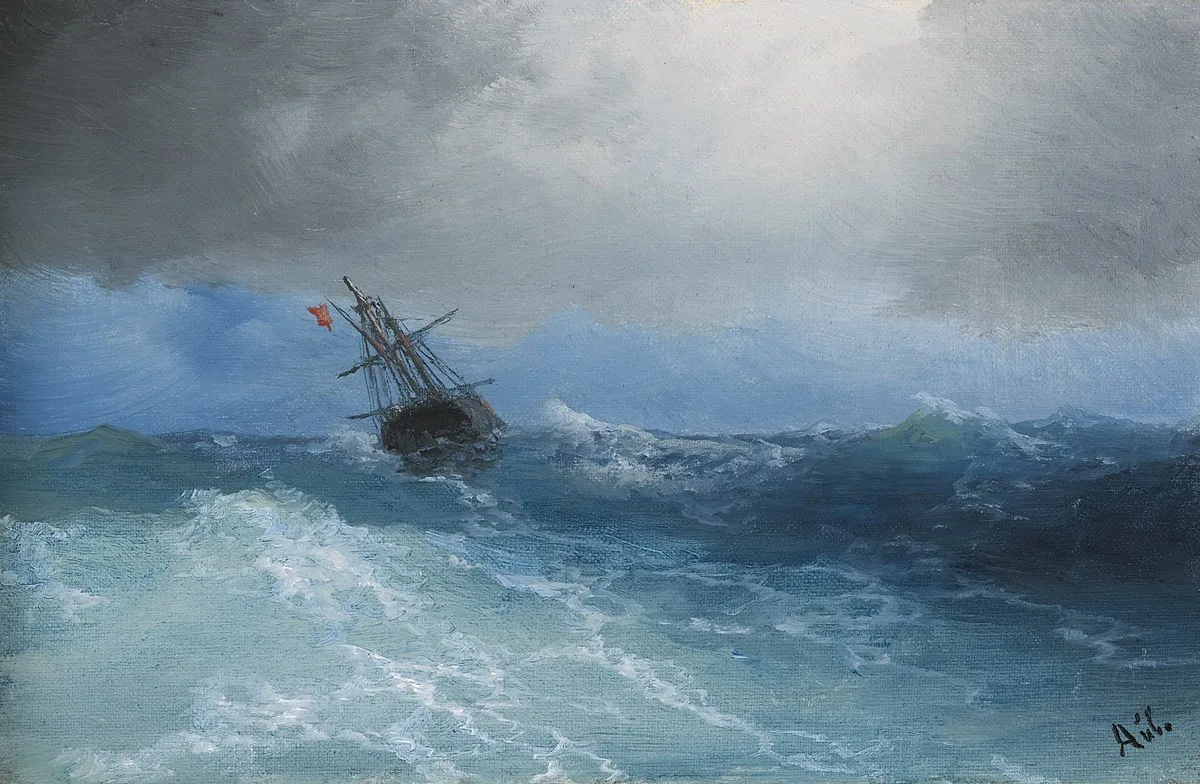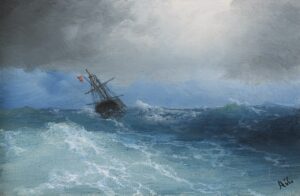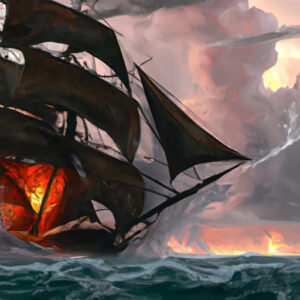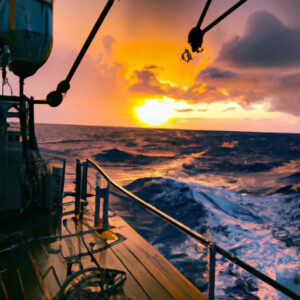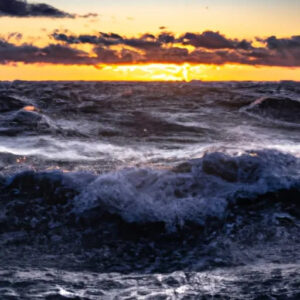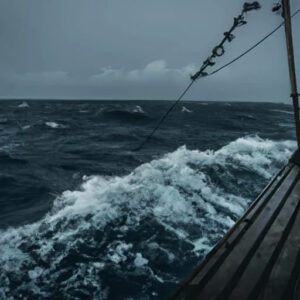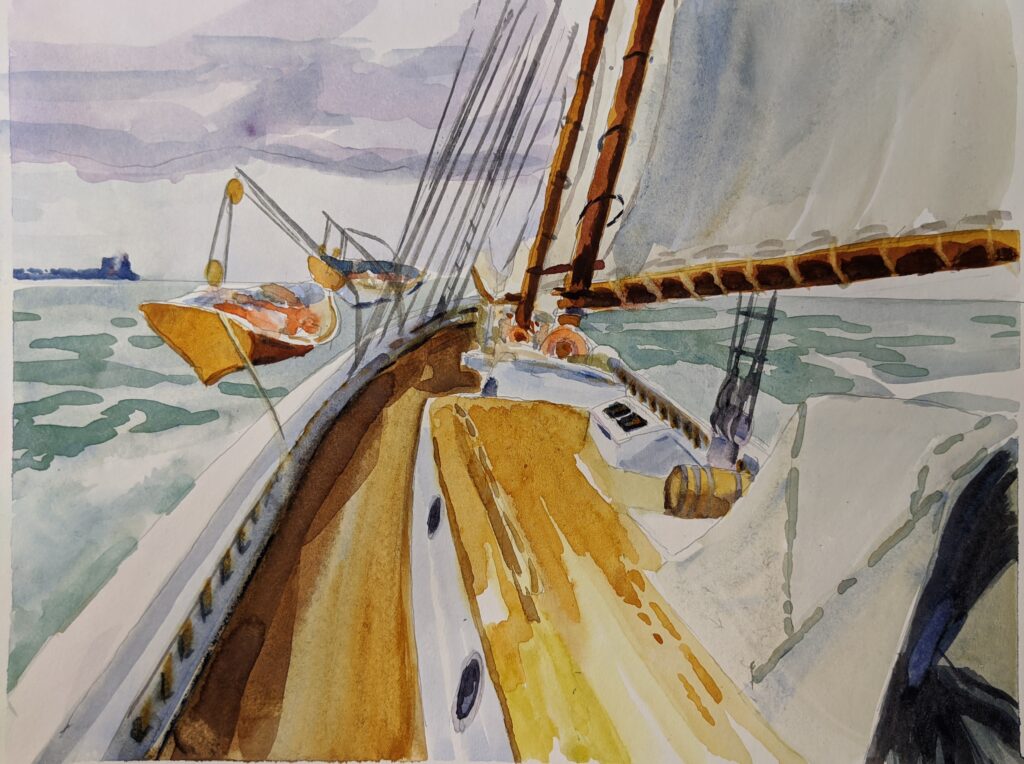
For a certified geriatric, I’m pretty good at the internet, but it is demanding. There’s a constant encroachment of synthetic experience, in the form of AI and enhanced photographs. There are scammers. Moreover, I feel obliged to read the news, which has become yet another virtual experience. Meanwhile, the sun is shining and the soft ocean breezes are blowing, but too many of us are in our air-conditioned rooms experiencing life vicariously.
I see a steady shrinking of real, physical, authentic experiences. Sometimes I worry that reality is downright endangered.
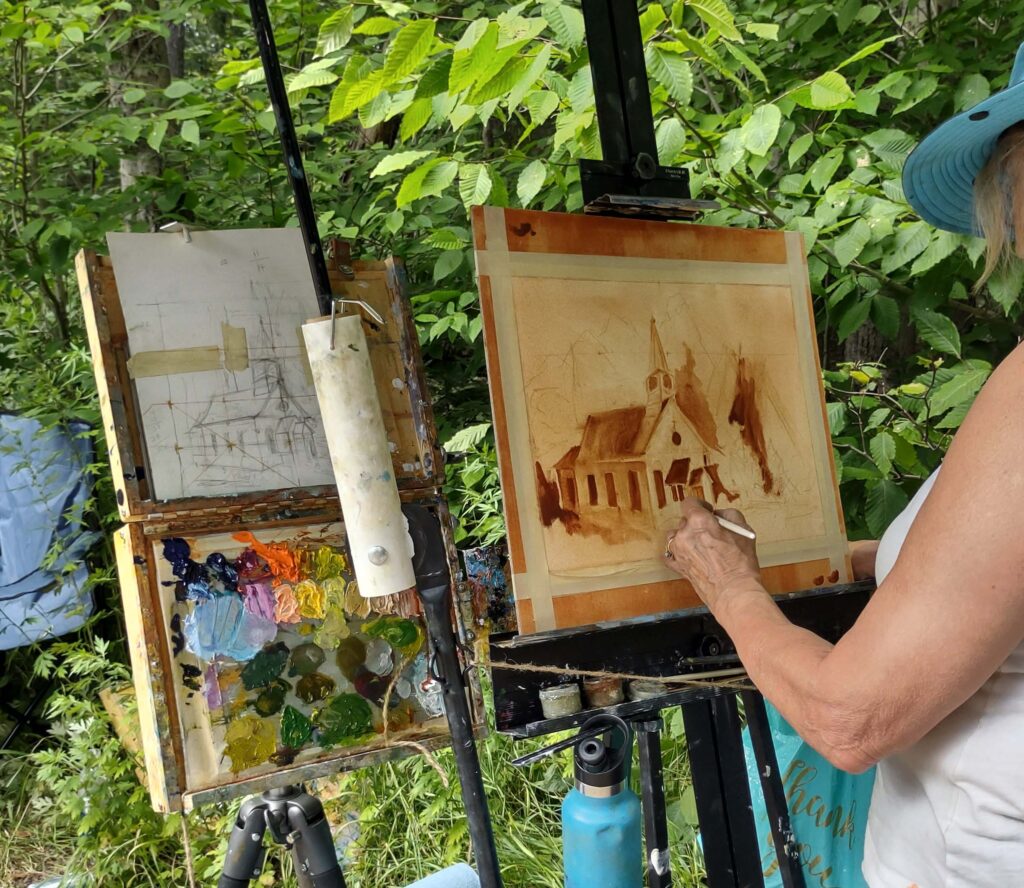
Some of the things you can’t get from AI
Paintings They’re tangible, tactile, dimensional, handmade objects, which is why they don’t lend themselves to being made into NFTs.
Nature. My photos have been viewed on Google more than 66,000 times. I think 90% of them were taken on Beech Hill. As many pictures as I take, I know my plein air workshop students experience it in a way no photo can recreate. It is never the same two days running.
The ocean. Penobscot Bay is a constantly-changing sensory delight, with cool breezes, the tang of saltwater, and a smattering of offshore islands that sparkle in the sun. Even the best photo can only capture the visual, and then incompletely. Those other sensations are not reproducible.
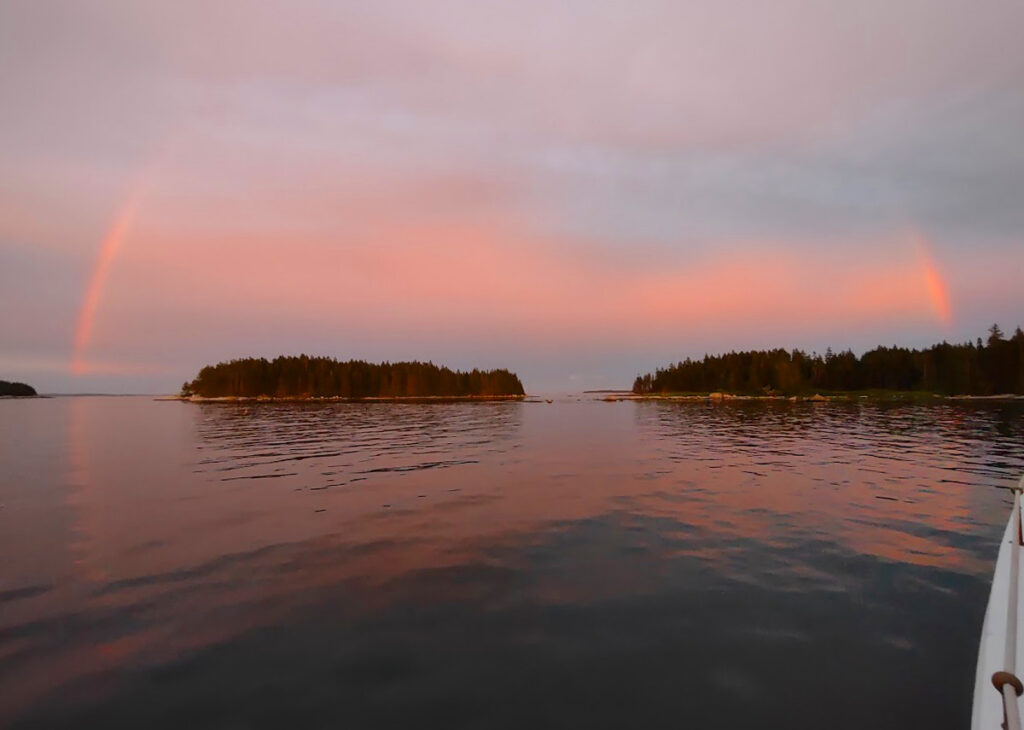
This boat, which has been sailing the Gulf of Maine for close to a century. It’s ecotourism at its best, and you don’t experience the ocean as fully in any other vessel. For one thing, it’s quiet.
Little villages. Yes, Maine villages are photogenic, but they’re also communities. Painting them from a picture is one thing; painting them in real life means you learn about the place. For example, on Thursday, Jeanne-Marie and I learned who owned that magnificent yellow house she was painting and the likelihood it would go on the market. We also learned who’s doing what at the Camden Garden Club Tour tomorrow. Then she walked downtown and got coffee at Zoot, which is almost next door to where my paintings are hanging at Lone Pine Realty. You feel the difference in a small town.
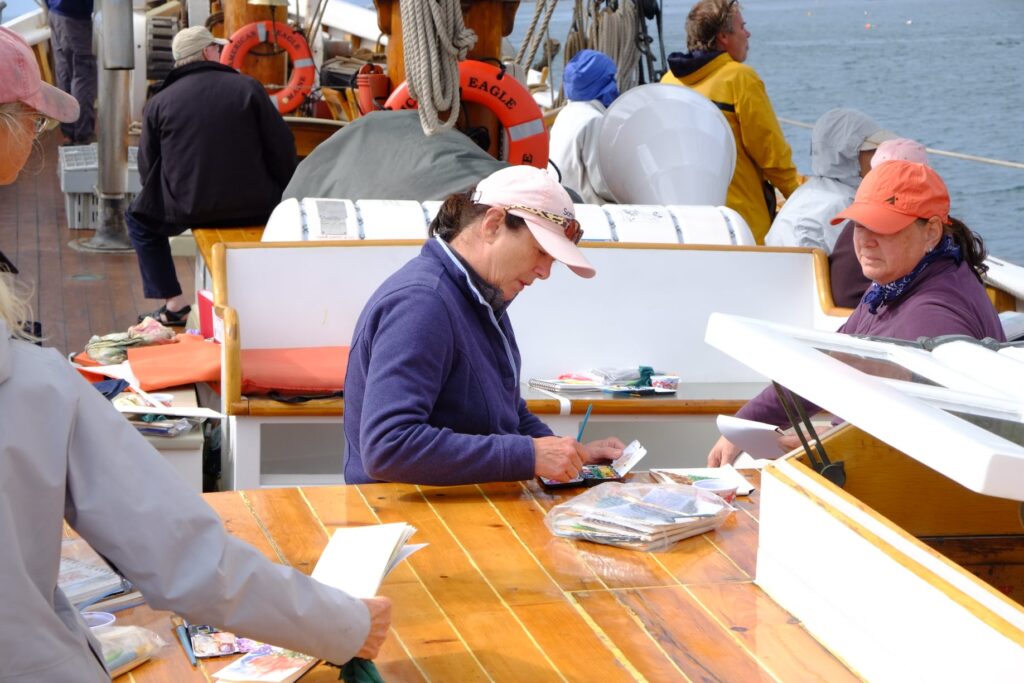
Real time. That’s sometimes fast, and sometimes slow, but it’s dictated by reality, not video. Plein air painting can challenge you to work quickly and decisively or it can allow you to relax into the place. It’s simply less structured than virtual reality.
A sense of place. Every time I say goodbye to a plein air workshop group, I find myself telling them to move to midcoast Maine. We’ve developed deep relationships in the week we’ve painted together, and I want them all to be my neighbors.
Myriad viewpoints. There’s never just one view; there are multiple compositions at almost every place. That and the constantly-changing light are inspiring in a way that AI or photographs can never be. They force you to think in a way that copying a photo never can.
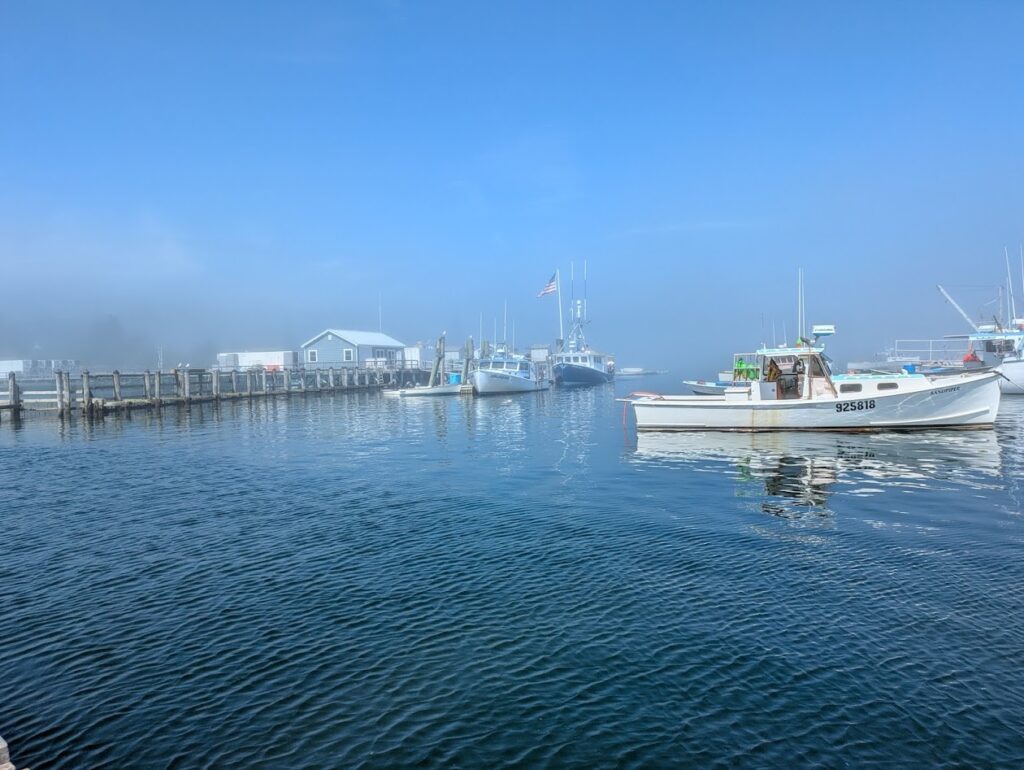
Know what’s real? Plein air workshops.
I love teaching on Zoom for many reasons, but the most important is that my Zoom students make very fast progress. However, I also need to teach plein air workshops too; that’s a soul call, not a financial one.
Even though I have very close friendships in cyberspace, the human connection in a workshop is different. I saw Sharon of right-angle fame yesterday. We had a brief, warm and charming conversation that made me smile all day.
A note: I have a few openings for Sea & Sky at Acadia National Park, but if you want to take that workshop and stay at the Schoodic Institute, the drop-dead deadline is this coming Monday. I have a little more flexibility for commuters, but I don’t know how likely it is that you’ll find a rental this late in the season.
My 2024 workshops:
- Sea & Sky at Schoodic, August 4-9, 2024.
- Find your authentic voice in plein air: Berkshires, August 12-16, 2024.
- Art and Adventure at Sea: Paint Aboard Schooner American Eagle, September 15-19, 2024.
- Immersive In-Person Workshop: Rockport, ME, October 7-11, 2024.

